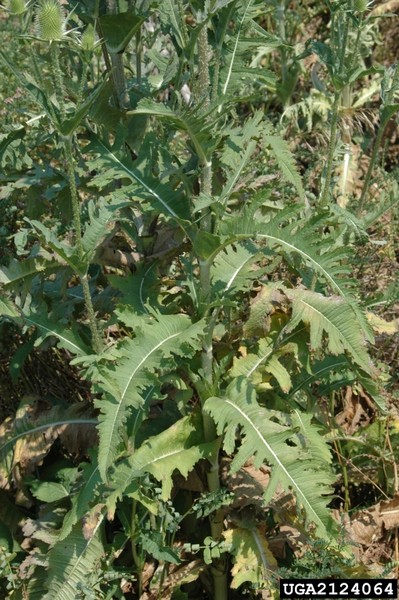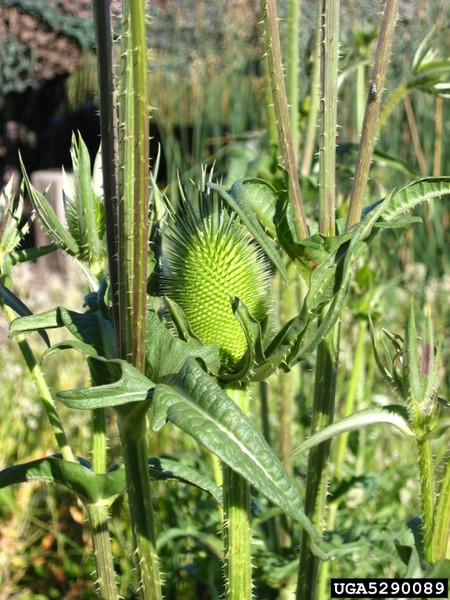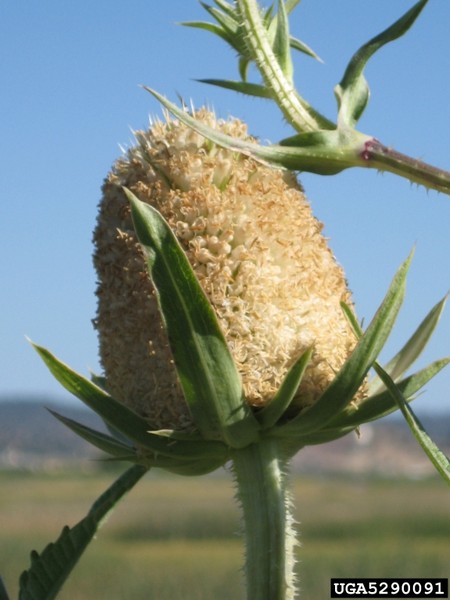photo: Todd Pfeiffer, Klamath County Weed Control, Bugwood.org
Cut-leaf Teasel (Dipsacus laciniatus)
 Chris Evans, Illinois Wildlife Action Plan, Bugwood.org |
 Todd Pfeiffer, Klamath County Weed Control, Bugwood.org |
 Todd Pfeiffer, Klamath County Weed Control, Bugwood.org |
Form:
Herbaceous, monocarpic perennial. Grows as a basal rosette for at least one year. Forms a prickly, angled flowering stalk, 2-6' tall, typically in second or third year.
Leaves:
Opposite, large (up to 1.5' long), oblong, and prickly. Leaves of flowering plants join into cup around stem. Common teasel's leaves are not lobed. Leaves of cut-leaved teasel are broader and have deep, feathering lobes.
Flowers:
Hundreds of small flowers clustered in dense, egg-shaped heads. Stiff, spiny, leaf-like bracts curve up from base of flower head. Common teasel has purple flowers and bracts longer that flower head. Cut-leaved teasel has white flowers and bracts shorter than flower heads. Both species bloom in summer.
Fruits & Seeds:
Each plant can produce as many as 2,000 seeds. Seeds remain viable in the soil for at least two years.
Roots:
Deep taproot, up to 2' long and 1" in diameter.
Tier 2 - Assess As Needed
The size and extent of these species populations are currently being inventoried with limited geographic information available. This survey will assist with identifying future control targets as populations are defined.
Action: The inventory of these plants is ongoing. The approximate number of plants should be recorded keeping in mind population sizes may be highly variable.





